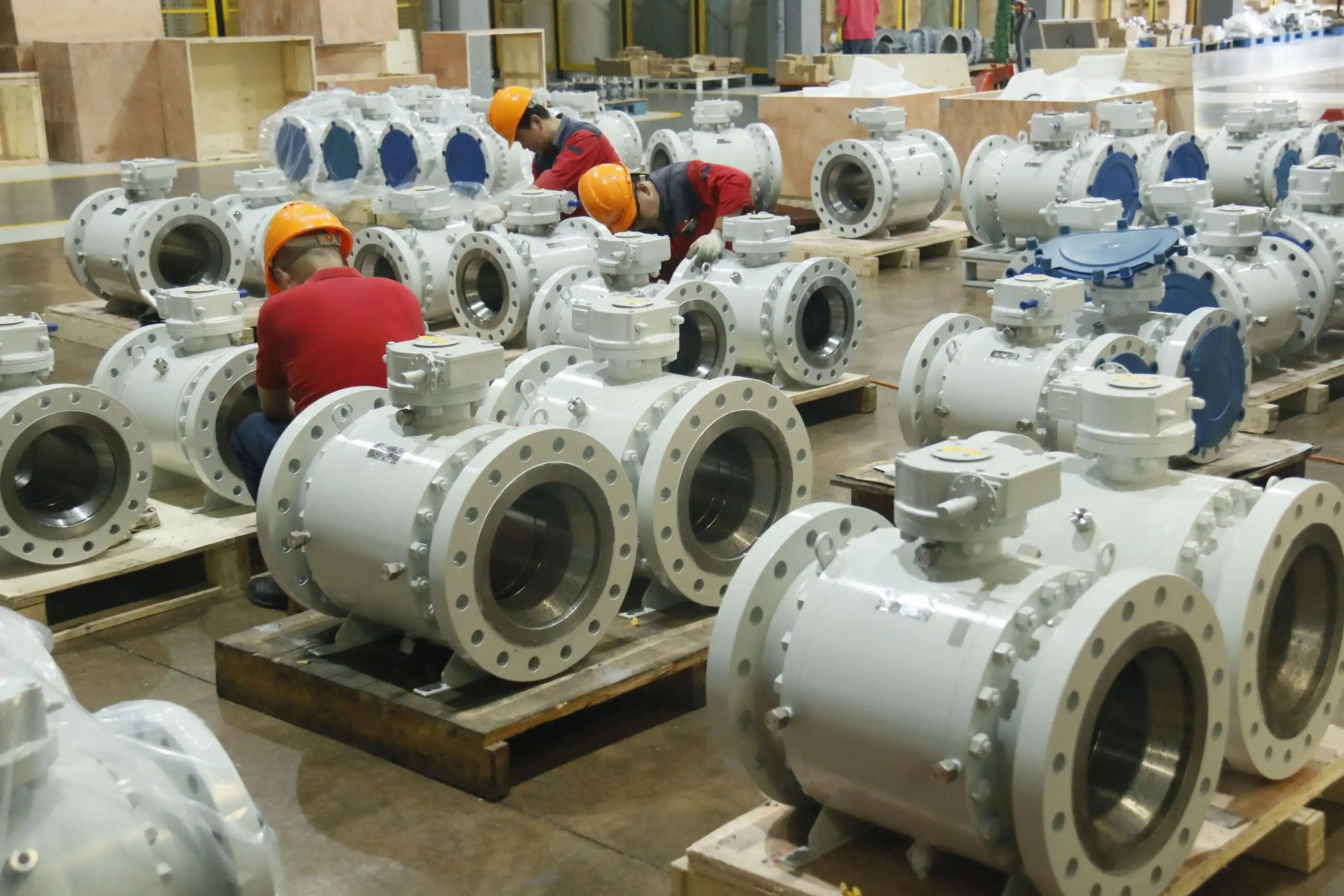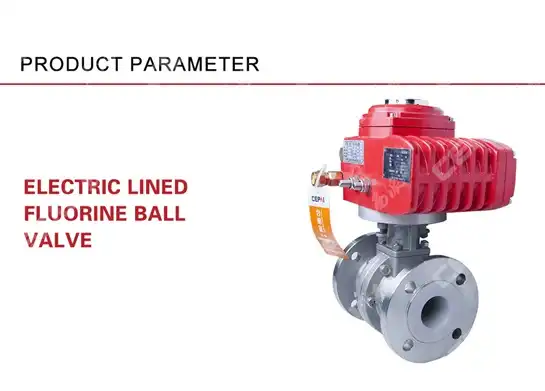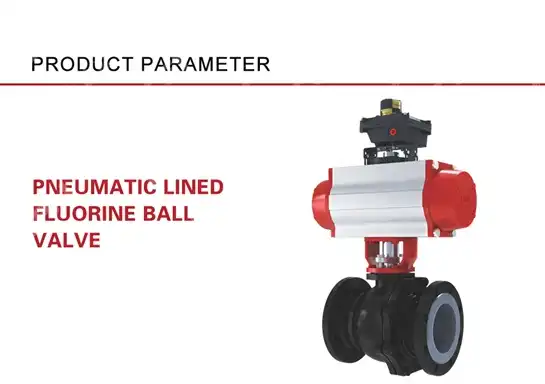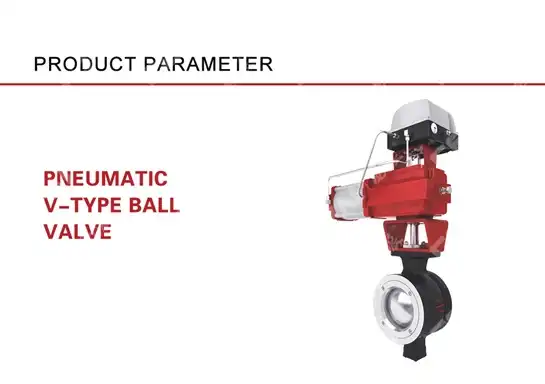Pneumatic Ball Valve for Air Compressors: Selection and Sizing Guide
Are you struggling with inefficient air compressor systems that experience frequent pressure drops, leakage issues, or inconsistent flow control? The root cause often lies in improper pneumatic ball valve selection and sizing. When air compressor systems fail to deliver optimal performance, production downtime and increased energy costs become inevitable consequences. This comprehensive guide addresses the critical factors in selecting and sizing pneumatic ball valves for air compressor applications, ensuring maximum system efficiency, reliability, and cost-effectiveness. Understanding the proper selection criteria for pneumatic ball valve components will transform your compressed air system from a maintenance headache into a reliable, high-performance industrial asset.
Understanding Pneumatic Ball Valve Fundamentals in Air Compressor Systems
Pneumatic ball valves represent the cornerstone of efficient air compressor operation, serving as critical control components that regulate airflow, pressure, and system isolation. These quarter-turn valves utilize a spherical closure element with a bore through its center, allowing for complete flow passage when aligned with the pipeline and complete shutoff when rotated ninety degrees. In air compressor applications, pneumatic ball valves must withstand high-pressure differentials, frequent cycling, and varying temperature conditions while maintaining tight shutoff capabilities and minimal pressure drop across the valve body. The fundamental operating principle of a pneumatic ball valve involves pneumatic actuation that provides remote control capabilities, eliminating the need for manual operation in hazardous or inaccessible locations. This automation aspect becomes particularly crucial in large-scale compressed air systems where multiple valves require simultaneous operation or integration with process control systems. The pneumatic actuator receives compressed air signals to position the ball element, offering rapid response times and precise positioning control that manual valves cannot match.
-
Key Components and Design Features
Modern pneumatic ball valve designs incorporate advanced materials and engineering principles to address the demanding requirements of compressed air service. The ball element typically features hardened stainless steel or chrome-plated construction to resist wear from high-velocity air flow and contamination particles. The valve seats utilize engineered polymers or metal-backed soft seats that provide reliable sealing while accommodating thermal expansion and contraction cycles inherent in compressed air systems. Pneumatic actuators for ball valve applications range from simple spring-return designs for fail-safe operation to double-acting configurations that provide precise positioning control. The actuator sizing must correlate with the valve torque requirements, operating pressure range, and response time specifications. Advanced pneumatic ball valve assemblies incorporate position feedback systems, allowing for remote monitoring and automated control integration within comprehensive compressed air management systems.

Critical Selection Criteria for Air Compressor Pneumatic Ball Valves
Selecting the appropriate pneumatic ball valve for air compressor applications requires comprehensive evaluation of multiple technical parameters that directly impact system performance and operational reliability. The selection process begins with accurate determination of flow capacity requirements, pressure ratings, and environmental operating conditions. Flow capacity calculations must account for both normal operating conditions and peak demand scenarios, ensuring the valve can handle maximum system throughput without excessive pressure drop that reduces overall compressor efficiency. Pressure ratings represent another fundamental selection criterion, as pneumatic ball valves in air compressor service typically encounter pressures ranging from moderate industrial levels of 125 PSI to high-pressure applications exceeding 500 PSI. The valve pressure rating must provide adequate safety margin above maximum system pressure, accounting for pressure spikes during compressor startup and emergency shutdown conditions. Temperature considerations also influence material selection and valve design, particularly in applications involving after-coolers or heated compressed air systems.
-
Material Compatibility and Durability Factors
Material selection for pneumatic ball valve components in air compressor applications must address corrosion resistance, wear characteristics, and compatibility with compressed air quality levels. Standard compressed air contains moisture, oil carryover from compressor operation, and potential contamination from atmospheric intake. These contaminants can cause premature valve degradation if materials are not properly selected for the specific operating environment. Body materials typically include cast iron, ductile iron, carbon steel, or stainless steel, depending on pressure requirements and environmental conditions. Stainless steel construction offers superior corrosion resistance and is preferred for applications involving high moisture content or chemical contamination. The internal components, including the ball element, seats, and seals, require materials that maintain sealing integrity throughout repeated pressure cycling and temperature variations typical of compressed air systems.
-
Sizing Methodology and Flow Calculations
Proper sizing of pneumatic ball valves for air compressor applications involves calculating the required flow coefficient (Cv) based on system flow rates, pressure conditions, and acceptable pressure drop limits. The flow coefficient determines the valve's capacity to pass fluid volume at specified pressure differential conditions. For compressed air applications, the calculation must account for the compressible nature of air and potential choked flow conditions that occur at high pressure ratios. The standard sizing equation for pneumatic ball valves in compressed air service considers inlet pressure, outlet pressure, flow rate, and air temperature. Engineers typically target pressure drop limitations of 5-10% of inlet pressure to minimize energy losses while ensuring adequate flow capacity for system requirements. Undersized valves create excessive pressure drop and reduce system efficiency, while oversized valves may experience control instability and increased initial cost without performance benefits.
Installation Considerations and System Integration
Proper installation of pneumatic ball valves in air compressor systems requires careful attention to piping configuration, actuator positioning, and maintenance accessibility. The valve orientation affects both flow characteristics and actuator performance, with consideration for drainage of moisture condensation that commonly occurs in compressed air systems. Horizontal installation with the actuator positioned above the valve body prevents moisture accumulation in actuator components while providing optimal access for maintenance operations. Piping design surrounding the pneumatic ball valve installation must accommodate thermal expansion, vibration isolation, and adequate support to prevent stress concentration on valve connections. The use of flexible connectors or expansion joints may be necessary in applications where thermal cycling or mechanical vibration could compromise valve integrity. Additionally, proper filtration and air preparation upstream of critical pneumatic ball valves extends operational life and maintains performance specifications.
-
Actuator Selection and Control Integration
Pneumatic actuator selection for ball valve applications in compressed air systems involves matching actuator torque output with valve operating requirements across the full range of pressure conditions. Spring-return actuators provide fail-safe operation by automatically positioning the valve to a predetermined safe state upon loss of control air supply. This feature becomes critical in applications where valve position during emergency conditions affects system safety or process continuity. Control system integration requires consideration of signal types, response time requirements, and feedback capabilities. Modern pneumatic ball valve installations often incorporate electronic position transmitters that provide valve position feedback to distributed control systems or SCADA networks. This integration enables automated sequencing, remote monitoring, and predictive maintenance capabilities that optimize overall compressed air system performance and reliability.

Maintenance Strategies and Performance Optimization
Effective maintenance of pneumatic ball valves in air compressor applications extends beyond routine inspection schedules to encompass predictive maintenance techniques and performance monitoring. Regular maintenance activities include actuator lubrication, seal inspection, and verification of position indication accuracy. The frequency of maintenance interventions depends on operating conditions, duty cycle, and air quality factors that affect component wear rates. Performance optimization involves monitoring pressure drop across the valve during operation, tracking response times, and documenting any changes in sealing performance. Trending these parameters allows maintenance personnel to identify developing problems before they result in system failures or performance degradation. Advanced diagnostic techniques, including vibration analysis and thermographic inspection, can detect bearing wear, seal degradation, and actuator problems in early stages of development.
-
Troubleshooting Common Issues
Common operational issues with pneumatic ball valves in air compressor service include excessive leakage, slow response times, and incomplete stroke completion. Leakage problems typically result from seat wear, contamination buildup, or thermal distortion of sealing surfaces. Identifying the root cause requires systematic evaluation of operating conditions, maintenance history, and component condition assessment. Slow response times often indicate problems with actuator air supply, including inadequate pressure, restricted flow, or moisture contamination in control air lines. Response time degradation can also result from increased friction in valve bearings or actuator components due to lack of lubrication or contamination buildup. Systematic troubleshooting involves isolating potential causes through operational testing and component inspection procedures.
Advanced Applications and Emerging Technologies
Contemporary pneumatic ball valve technology for air compressor applications incorporates smart valve concepts that integrate sensors, communication capabilities, and advanced control features. These intelligent valve systems provide real-time performance data, automated calibration capabilities, and predictive maintenance alerts that optimize system operation and reduce maintenance costs. Integration with Industrial Internet of Things (IoT) platforms enables remote monitoring and control capabilities that support modern automated manufacturing environments. Emerging materials and coating technologies continue to improve pneumatic ball valve performance in challenging compressed air applications. Advanced polymer seat materials offer enhanced chemical resistance and extended service life, while specialized coatings reduce friction and improve corrosion resistance. These technological advances enable pneumatic ball valve applications in more demanding environments and extend maintenance intervals.
-
Energy Efficiency Considerations
Energy efficiency optimization in compressed air systems increasingly focuses on minimizing pressure drops and improving control precision throughout the distribution network. Pneumatic ball valves contribute to energy efficiency through low-pressure drop design, tight shutoff capabilities, and precise flow control that eliminates wasteful air consumption. Modern valve designs incorporate flow optimization features that reduce turbulence and energy losses associated with flow direction changes and restrictions. The selection of properly sized pneumatic ball valves directly impacts compressor energy consumption, as excessive pressure drops require higher discharge pressures to maintain system performance. Energy-efficient system design typically includes capacity margins of 25% to 50% to accommodate system leaks and future expansion, but valve sizing should minimize pressure losses while providing adequate flow capacity for operational requirements.
Conclusion
The selection and sizing of pneumatic ball valves for air compressor applications requires comprehensive understanding of system requirements, operating conditions, and performance objectives. Proper valve selection ensures optimal system efficiency, operational reliability, and maintenance cost control throughout the valve service life.
Cooperate with CEPAI Group Co., LTD.
CEPAI Group Co., LTD. stands as a premier China Pneumatic Ball Valve manufacturer with over 15 years of specialized experience in high-end valve manufacturing for critical industrial applications. Located in Jiangsu Province, our state-of-the-art manufacturing facility spans 56,000 square meters and represents one of the most advanced China Pneumatic Ball Valve factory operations in the Asia-Pacific region, featuring the longest high-precision intelligent manufacturing flexible production line currently operating in the domestic industrial field.
As a nationally recognized high-tech enterprise and specialized "little giant" manufacturer, CEPAI Group has earned certification from major oilfield service companies and engineering firms worldwide. Our comprehensive quality management system includes API Q1, API 6A, ISO 9001, ISO 14001, and ISO 45001 certifications, ensuring every High Quality Pneumatic Ball Valve meets the most stringent international standards. The company's extensive research and development capabilities are supported by Jiangsu Provincial Certified Enterprise Technology Center, Fluid Control Engineering Technology Research Center, and a CNAS nationally recognized laboratory.
CEPAI's position as a leading China Pneumatic Ball Valve supplier extends beyond manufacturing excellence to encompass comprehensive technical support services. Our engineering team provides pre-sales consultation, customized solution development, and complete after-sales support including remote monitoring and intelligent service capabilities. The company's commitment to innovation is demonstrated through substantial research and development investments, resulting in breakthrough technologies and patent portfolios that establish significant technological barriers for competitors.
Our China Pneumatic Ball Valve wholesale operations serve diverse industrial sectors including petrochemical, power generation, metallurgy, and water treatment applications. Major clients include PetroChina, Sinopec, CNOOC, China Datang Group, and China Chemical Engineering, demonstrating the trust placed in CEPAI's High Quality Pneumatic Ball Valve products by industry leaders. The company's integrated supply chain management ensures competitive Pneumatic Ball Valve price positioning while maintaining exceptional quality standards throughout production processes.
CEPAI Group's intelligent manufacturing approach combines advanced automation, digital integration, and quality assurance systems to deliver Pneumatic Ball Valve for sale that exceeds customer expectations. Our remote operation and maintenance service system provides online AR guidance, enhancing user dependence and satisfaction while minimizing operational disruptions. Contact CEPAI Group today at cepai@cepai.com to discuss your pneumatic ball valve requirements and experience the advantages of partnering with China's leading valve technology innovator.
FAQ
Q: What pressure ratings are available for pneumatic ball valves in air compressor applications?
A: Pneumatic ball valves for air compressors typically range from 150 PSI to 1500 PSI, with standard industrial applications using 125-500 PSI ratings depending on system requirements.
Q: How do I calculate the proper size for a pneumatic ball valve in my compressed air system?
A: Valve sizing requires calculating the flow coefficient (Cv) based on your system's CFM requirements, operating pressure, and acceptable pressure drop, typically limiting pressure loss to 5-10% of inlet pressure.
Q: What maintenance intervals are recommended for pneumatic ball valves in air compressor service?
A: Maintenance intervals depend on operating conditions, but typically include quarterly actuator lubrication, semi-annual seal inspection, and annual complete performance verification for critical applications.
Q: Can pneumatic ball valves handle moisture and oil contamination common in compressed air systems?
A: Yes, properly selected pneumatic ball valves with appropriate materials and sealing systems effectively handle typical compressed air contamination, though proper air preparation extends service life significantly.
References
1. "Industrial Valve Technology: Selection and Application Guidelines" - Smith, Robert K., Mechanical Engineering Standards Institute
2. "Compressed Air System Design and Optimization" - Johnson, Maria L., American Society of Mechanical Engineers
3. "Pneumatic Control Systems: Principles and Applications" - Chen, David W., International Fluid Power Society
4. "Valve Selection and Sizing for Industrial Applications" - Anderson, James R., Process Industry Practices Consortium
_1746598563385.webp)
Get professional pre-sales technical consultation and valve selection services, customized solution services.

About CEPAI


